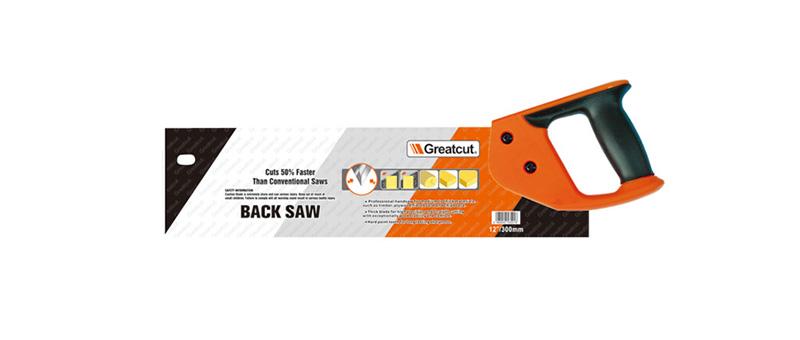Why the Back Saw Remains Relevant in Contemporary Workshops

The integration of the back saw into woodworking practice reflects a long-standing appreciation for tools that combine mechanical simplicity with functional precision. This saw's distinctive feature is the reinforced back that lends the tool its name and primary operating characteristic. This reinforcement enables the use of a thin blade without sacrificing straight-line cutting performance, a combination that supports accurate work in various woodworking disciplines. The back saw appears in several specialized forms, including the tenon saw, the dovetail saw, and the gent's saw, each with variations in size, tooth count, and handle configuration suited to specific tasks. The common thread among these variations is the reinforced spine that defines the back saw category. This tool continues to be valued for its ability to produce clean, accurate cuts in situations where power tools might be cumbersome or overly aggressive.
Selecting an appropriate back saw involves consideration of several functional attributes. Tooth count is a primary differentiator, with a higher tooth count producing a finer cut suitable for dovetails and other delicate joinery, while a lower tooth count provides faster cutting for larger tenons. The length of the blade influences the cutting capacity and control, with shorter back saw versions offering greater maneuverability for small work. The configuration of the handle—whether pistol grip or straight—affects user comfort and control during extended use. The material and weight of the spine also vary, with a heavier spine providing more momentum during the cutting stroke but potentially increasing user fatigue. These considerations guide woodworkers in choosing a back saw that aligns with their specific project requirements and personal working style.
Mastering the use of a back saw requires developing an understanding of its unique handling characteristics. The tool excels when the user establishes a steady rhythm, allowing the saw's weight and sharp teeth to perform the cutting action with minimal forced pressure. Proper alignment is crucial, with the user's eye and body positioned to ensure the blade follows the marked line accurately. When cutting joinery such as tenons, experienced woodworkers often use a back saw to cut just outside the line, then refine the surface with other tools to achieve a perfect fit. The maintenance of a back saw focuses on keeping the teeth sharp and free of rust, as a dull back saw requires excessive force that can compromise cutting accuracy. With proper care and technique, a quality back saw becomes an extension of the woodworker's skill, enabling the creation of tight-fitting joints and accurately cut components.
The back saw represents a thoughtful implementation of simple mechanical principles to achieve woodworking precision. Its design has evolved to include variations that address specific cutting tasks within the craft. The tool's effectiveness depends on proper selection matched to the work and the development of user skill through practice and experience. Despite the availability of powered alternatives, the back saw maintains its place in workshops due to the control and satisfaction it provides in the hands of a skilled user.





